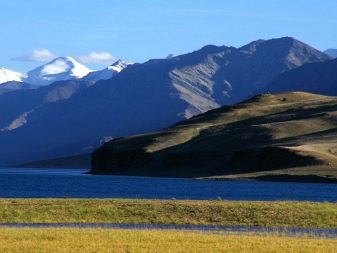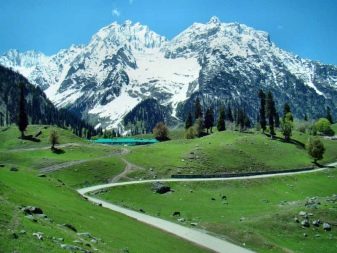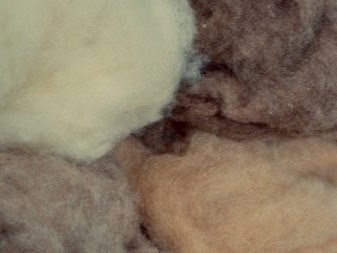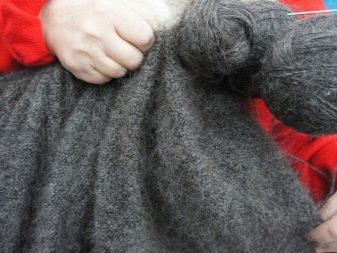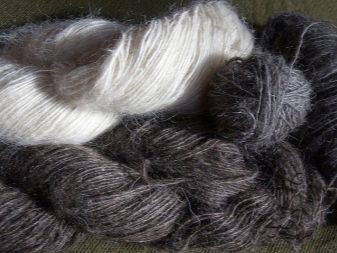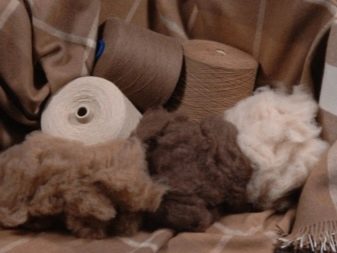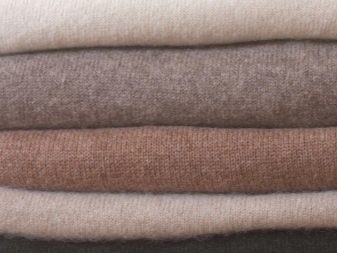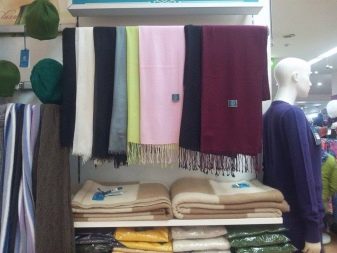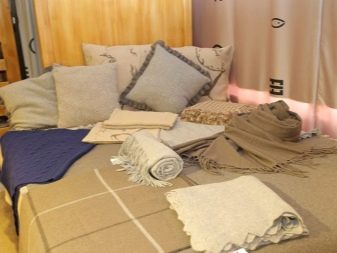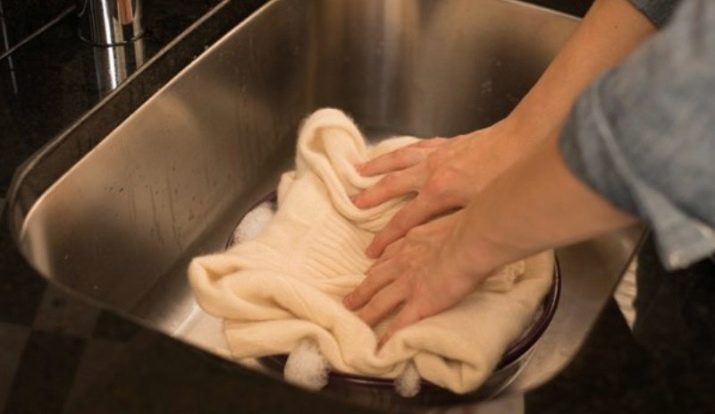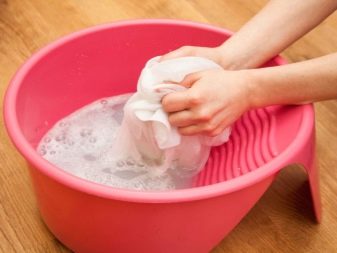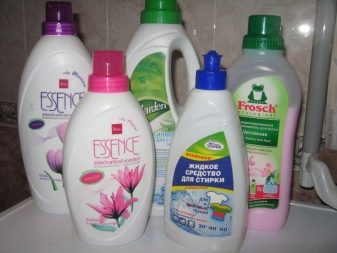With the onset of cold weather, clothes from soft and warm cashmere become relevant. Mongolian cashmere is a wonderful material with unique properties that is created only in the harsh climate of the mountains of Mongolia.
Specifications
Many people think that cashmere is such a type of wool, but in fact it is not. Cashmere is much thinner and warmer (eight times) wool, because it is produced not from the hair (wool) cover of goats and sheep, but from the down of these animals, or, as it is called differently, the undercoat. Cashmere yarn is created only from the undercoat of goats that live in the highlands of Mongolia. Actually, the name of cashmere comes from the foothill Himalayan region - Kashmir. Breeding of these goat breeds in other climatic conditions does not give an undercoat of such high quality.
The properties of the Mongolian unique yarn, first of all, are its lightness and softness: the three-gram canvas will easily pass through the female ring. Such properties are explained by the finest downy fiber: each hair of the undercoat is three to four times thinner than a human hair. And due to the fact that the down is also hollow inside, cashmere products are highly insulated and can be worn both in cold and heat.
Thanks to their undercoat, Tibetan goats easily endure extreme temperature fluctuations during the day: from forty-degree daytime heat to twenty-degree night frosts.
Despite weightlessness and subtlety, high-quality cashmere is a very durable material and wear-resistant. The pellets on the canvas are formed after a long operation, partly in the places of friction, but they, too, are straightened after a properly performed wash. Possesses this material and other qualities.
- It is safe for allergy sufferers. Tibetan goat fluff is completely hypoallergenic, microscopic mites do not start there. Cashmere knitwear is suitable for creating clothes and bedspreads, even for newborns.
- Carefully treats the skin, does not prick her and does not cause itching.
- Able to treat diseases of the joints and spine with its dry heat penetrating deep into. In addition, a cashmere thing, dressed on a naked body, has a massage effect on the skin.
Production features
The negative property of cashmere is its high cost compared to the same wool. This is due to the complex production process and the low yield of undercoat from one Tibetan goat per year: only about 160 g. All stages of cashmere production are done manually, the technologies have not been modernized for several centuries. Plucking fluff from goats is also rare: once a year, in spring, when there is no danger that the animal will freeze.
For standard size shawls, you will need an undercoat removed from 6-7 goats.
Undercoat sorted by color and quality. The color of natural fiber can be white (the most valuable), gray, beige and black. First, the finest fiber is selected, from which a delicate yarn is produced called pashmina. Firmer fibers become the basis for the creation of "soft gold" from Mongolia - cashmere. High-quality cashmere fabric is always made by hand from the stage of processing and spinning to dyeing. Things from it ideally sit on the figure, they are warm and comfortable.
How to choose and care?
The main and explicit criterion for the selection of quality cashmere is its price. The estimated price at which you can judge its quality is at least 3 thousand rubles per 1 m2. Even in the homeland of production, in Mongolia, this cost will not significantly decrease.TAlso, when choosing cashmere products, experts advise to rely on some criteria.
- Picking up cashmere material should not feel its weight.
- Having passed by hand on the canvas, the villi should remain in place, and not fly apart. Loose particles indicate a low quality cashmere fiber.
- The product tag should contain information about double weaving of the thread. Since cashmere yarn is very thin, products made from double twisted yarn will last longer.
- The lack of a pellet. For cashmere things the appearance of pellets is not typical. They appear only with improper operation or very long wear.
- A cashmere canvas that claims to be a quality one must be so dense that when you look at it, no glimpses will be visible. Translucent canvas will not warm properly.
- A cashmere product after stretching it with its hands should acquire its original shape. If traces of stretching remain, the thing is of poor quality.
- Pay attention to the quality of the seams, their accuracy and the lack of curvature, because the thing from the expensive delicate canvas should serve more than one season.
To ensure a long sock and maintaining a good appearance of cashmere products will help proper care of them. First of all, it concerns washing: it must be very careful.
It is necessary to follow the rules of washing things from this precious material.
- It is recommended to remove the spots on the cashmere cloth as quickly as possible under cold water using non-aggressive liquid children's soap.
- The cashmere thing is not machine washed, even if the washing machine has delicate and gentle modes.
- Things with strong and outdated stains should be dry-cleaned. However, you should consider all the risks, because the thing can lose the brightness of the color.
- Hand washing of cashmere products can only be in cold water up to 30 ° C and with a liquid detergent. As a liquid means you can consider baby shampoo.
- Places with dirt do not rub and in any case do not squeeze, but gently and gently rinse.
- After washing, the item should be gently rinsed several times in cold water until the detergent is washed.
- Without pressing, it is better to soak the water from the washed thing with a hygroscopic towel.
- Cashmere things for drying should be gently straightened on a horizontal surface away from heating appliances or sunlight.
Cashmere is ironed on a low temperature (no more than 120 ° C) on the reverse side, using wet gauze.
At the end of the season, cashmere items should be removed for storage. It is better not to hang it on a hanger, but carefully pack it in a paper bag without any creases, putting in it a moth remedy.
Reviews
Currently, things from 100% cashmere, including because of the price, are rare. But modern technologies allow making various mixes of cashmere and other natural and synthetic materials. Net yarn from a sub-tibetan goat is added to costume, coarse fabrics and fine knitwear, and then sewn hats, shawls, ponchos, business men's and women's suits, coats, parks and cardigans.
After analyzing the reviews of people who purchased things from pure cashmere, and in combination with other materials, we can say that in general they are satisfied. When used properly, things are worn for a long time, they are not deformed, and such an unpleasant phenomenon, like pellets, may appear in the third or fourth year of socks. The negative point, unfortunately, is still only its high cost.
On the production of Mongolian cashmere, see the following video.

